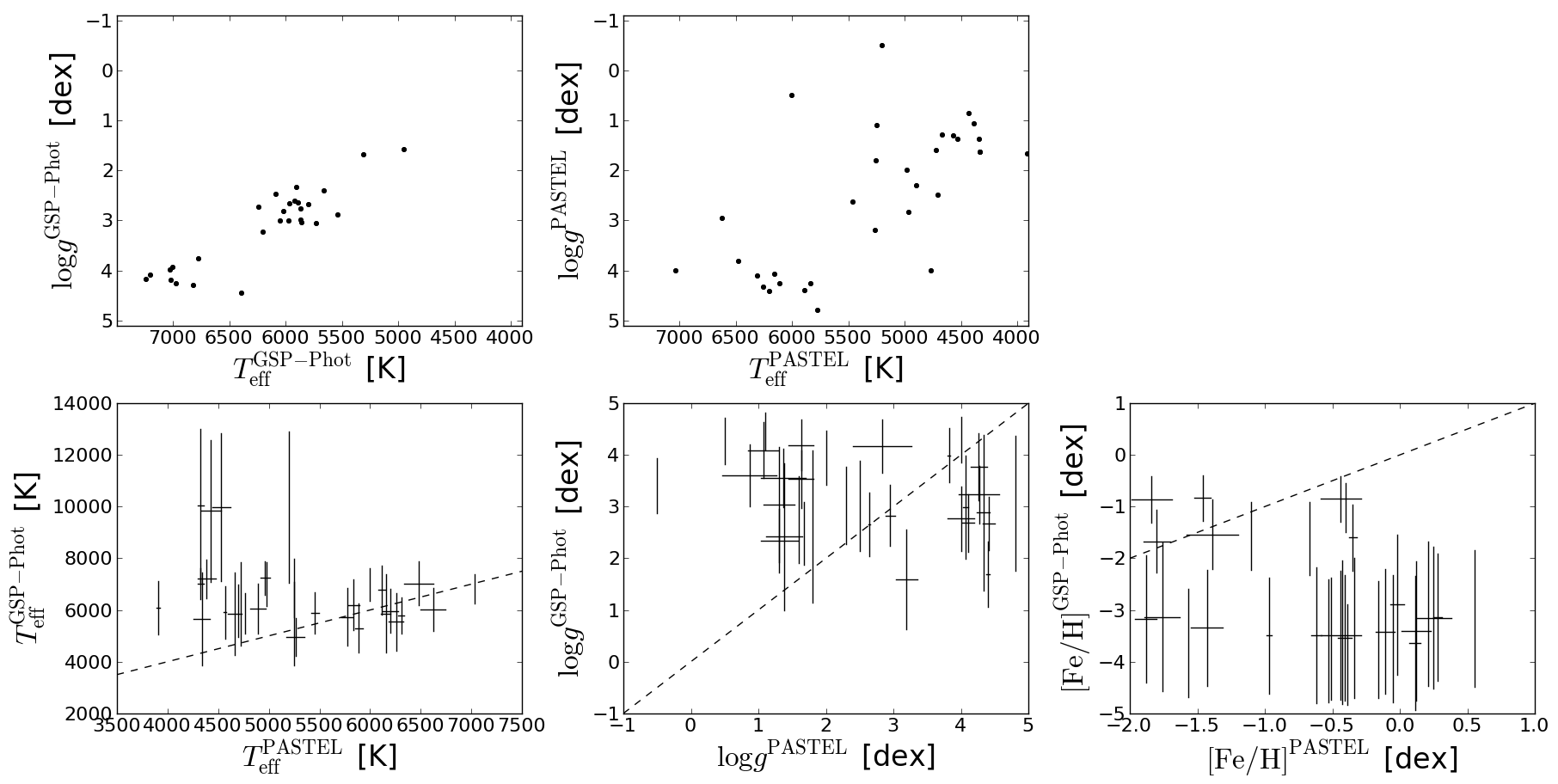tests:astropars:challenge2
Table of Contents
Challenge 2: Reference stars
Objectives
- Employ high-resolution spectra from X-shooter archive to investigate how the Gaia spectra will look like.
- Investigate GSP-Phot performance on X-shooter spectra.
Comparison to RVS and BP/RP spectra
- Gaia RVS spectra and corresponding segments of x-shooter spectra look very similar. Ca-Triplet lines are easily identified and other prominent lines are also in obvious correspondence.
- x-shooter spectra contain telluric bands around 760nm and 950nm. In fact, BP/RP shows prominent dips there, which are NOT reflected by space-based instrument models. That must be a problem when modelling those spectra with GSP-Phot.
GSP-Phot performance on x-shooter spectra
- Paula compiled mean parameters for all stars from Pastel. (These are no “true” values but mean literature values.)
- Paula's data contains a lot of giants. GSP-Phot lacks giants in its training data, i.e., it is unlikely to perform well on giants (c.f. Challenge 4).
- GSP-Phot performs very poorly on x-shooter spectra: Teff is loosely related for some stars, but logg looks rather random and GSP-Phot tends to assign too low [Fe/H].
Possible explanations for poor GSP-Phot performance
- x-shooter spectra are ground-based spectra, including telluric features, that are not part of the Gaia spectra.
- Lack of giants in GSP-Phot training data.
- x-shooter spectra were processed with GOG version 14, whereas GSP-Phot training data was processed with GOG version 8.
Andy's SICK performance on x-shooter spectra
tests/astropars/challenge2.txt · Last modified: 2022/10/24 12:26 by 127.0.0.1


